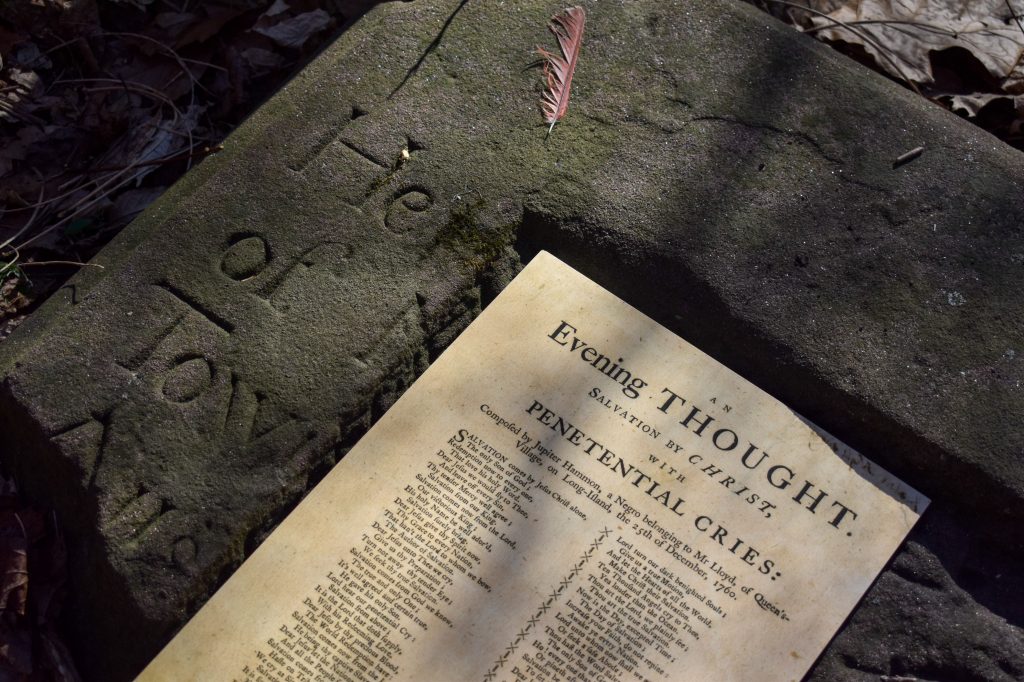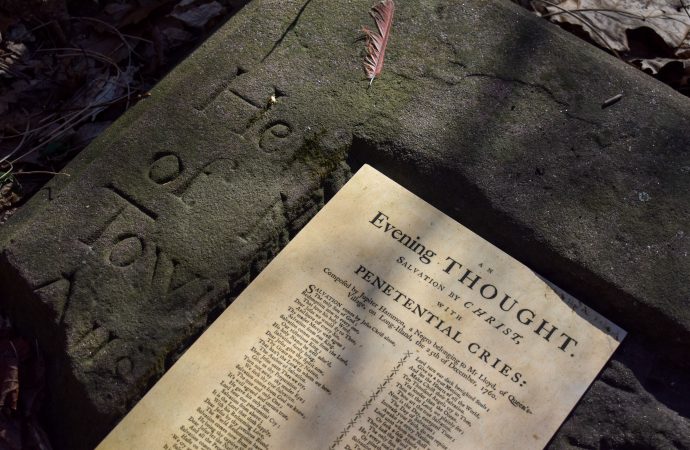BY Brianne Ledda
JRN 490 Spring 2021

The stones are hidden in underbrush, so obscured that a hiker on the trail nearby – passing only feet away – would miss them.
Thorny, waist-high shrubs grow in a circle around the site. The stones rest in a vaguely circular formation, underneath a small tree that bends weeping branches over the largest stone resting on its roots. Its branches brush preservationist Sarah Kautz as she examines the man-made stone.
Kautz, the preservation director at Preservation Long Island, believes the stones may mark the final resting place of Jupiter Hammon, the first published Black poet in the United States. Hammon, whose earliest poem was printed around 1761, was enslaved by the Lloyd family on their estate on Lloyd Neck in Huntington, New York for most of his life. Because he was enslaved, she said it’s unclear how he learned to read and write, but around 50 years old, Hammon became a published poet.
“It’s remarkable that we don’t know about him,” Kautz said. “Everybody knows Walt Whitman and Whitman is awesome. But so is Jupiter. And they’re both from Huntington.”
The largest stone has molded edges and engraved letters, interrupted by a sharp-cornered impression. It’s nearly impossible for Kautz to make out the inscription. She then inspects the smaller, weathered stones nearby.
In February, the Town of Huntington announced plans to preserve and study the site, a former Lloyd cemetery in Caumsett State Park, as the town focuses a renewed energy into its Black history.

